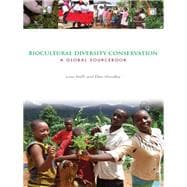
Note: Supplemental materials are not guaranteed with Rental or Used book purchases.
Purchase Benefits
What is included with this book?
| Figures, tables, boxes and plates | p. vii |
| Foreword | p. xi |
| Acknowledgements | p. xiii |
| Abbreviations | p. xv |
| Introduction: Why a Sourcebook on Biocultural Diversity? | p. xix |
| Biocultural Diversity: Conceptual Framework | |
| What is Biocultural Diversity? | p. 3 |
| Why is a Biocultural Approach Relevant for Sustaining Life in Nature and Culture? | p. 13 |
| Sustaining Biocultural Diversity: The Projects | |
| Surveying Biocultural Diversity Projects around the World | p. 23 |
| Overview of the Projects | p. 27 |
| Cross-cutting Analysis of the Projects | p. 129 |
| Lessons Learned from the Projects | p. 155 |
| Sustaining Biocultural Diversity: Future Directions | |
| Filling the Gaps and Connecting the Dots: Recommendations and Next Steps | p. 175 |
| Biocultural Diversity and the Future of Sustainability | p. 191 |
| References | p. 197 |
| Analytical Tables | p. 209 |
| Survey Details | p. 237 |
| Survey Contributor Information | p. 243 |
| Directory of Selected Resources on Biocultural Diversity | p. 249 |
| About Terralingua | p. 267 |
| About the Authors | p. 269 |
| Index | p. 271 |
| Table of Contents provided by Ingram. All Rights Reserved. |
The New copy of this book will include any supplemental materials advertised. Please check the title of the book to determine if it should include any access cards, study guides, lab manuals, CDs, etc.
The Used, Rental and eBook copies of this book are not guaranteed to include any supplemental materials. Typically, only the book itself is included. This is true even if the title states it includes any access cards, study guides, lab manuals, CDs, etc.